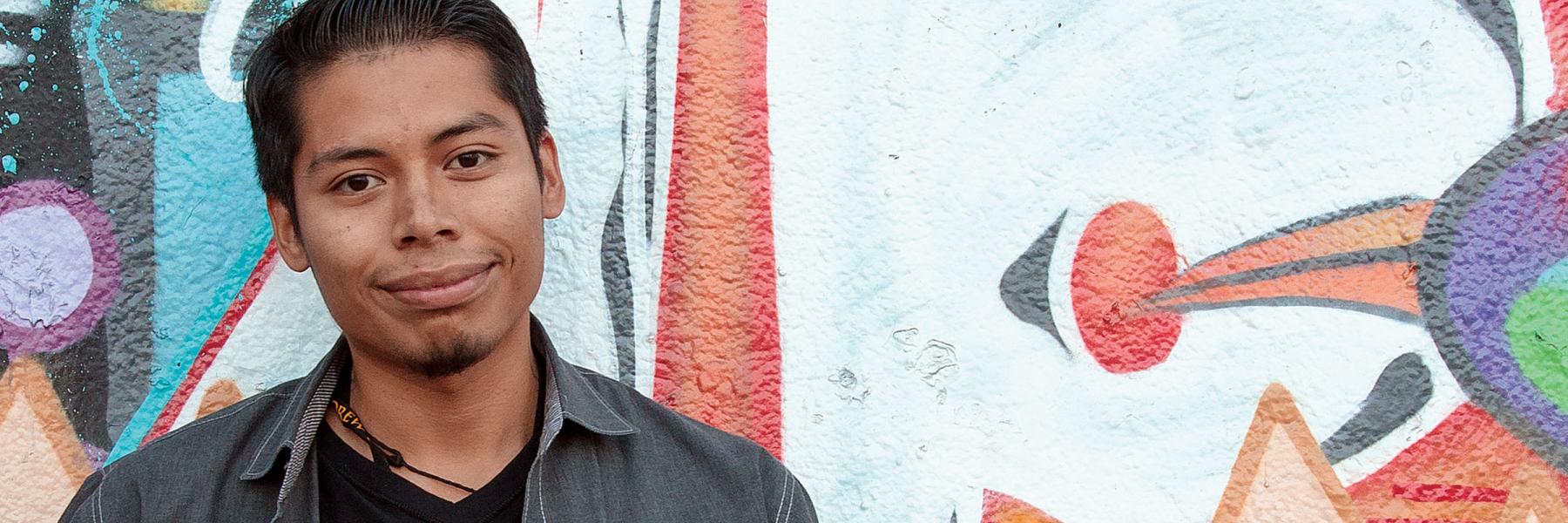
“I have to explain—even defend—my sexuality,” said Nestor Rogel, 27. Born with HIV in 1990, he finds accessing services, and clinical care, uncomfortable, and even discriminatory, as a straight man.
One doctor insisted on an anal swab for gonorrhea because he didn’t believe Rogel was straight. Nor did he believe that Rogel had never had anal sex. Rogel was extremely uncomfortable with the entire encounter, including the dismissal of his sexuality.
When filling out medical paperwork and putting down “HIV-positive,” providers have said, “Oh, you’re gay.” This despite the fact that they know he was born HIV-positive.
Rogel is open about having HIV and about being born with it. “I have this tattoo on my arm that reads ‘HIV+’ in big, bold letters,” he said, “so I get some interesting encounters in my day-to-day life.” People, including medical providers, often still don’t believe he’s straight. “Maybe because the virus is supposed to make me gay,” he jokes with a laugh.
Rogel first realized how left out he was as a straight male when he sought social services at the age of 18. His mother had died and he wanted to strike out on his own. He found housing services and other assistance closed off to him because they were created specifically for men who have sex with men (MSM). Although such services exclude him, he understands the need for serving gay men living with HIV.
“I know that HIV was once called GRID [gay-related immune disorder]. And because I have HIV, people assume automatically that I’m gay,” said Rogel. “I am often labeled as gay because I’m HIV-positive, or a drug user when people learn I’m straight.”
He only knows three other straight men living with the virus—and one of them lives in Thailand. “HIV providers focus heavily on ‘target populations,’ ” he said, such as young gay black men, and “we’re not a targeted population, so it’s not something that people want to focus on. We’re so few, so we’re forgotten.”
One difficulty arises when he searches for support from other people living with HIV.
In Los Angeles, where he lives, Rogel looked for events where he can talk with other people also living with the virus, but these events were inevitably gay-centric. He found himself having to explain that he is not gay, particularly when being cruised. “In a lot of ways … you feel sexually harassed. Having people staring at you, you know?” he says.
The men making him uncomfortable were older. One man who was interested in having sex with him taunted him to “stop being straight.”
It’s a problem that also affects young gay men looking for HIV services. Dazon Dixon Diallo, Executive Director of Sister Love in Atlanta, when interviewed for a separate article, reported that young gay men would rather reach out to her organization because they felt preyed upon by older men at other HIV service organizations.
Although Rogel is comfortable around gay men and the gay community, like many, he’s uncomfortable fending off unwanted advances.
“I go to these events just to know other people living with HIV, but you know, guys can be very aggressive when they flirt,” he said. “I tell my sisters [who are HIV-negative] I sympathize with them. I realize this is what I have to deal with when I go to events like this. But women have to deal with different straight guys every day of their lives.”
Yet educational or social events may be the only places where he can meet other positive people, or the only services he can access. Many services are provided directly by LGBTQ organizations.
He finds that HIV-positive women, however, often identify as heterosexual, and that may be one way to open up positive communities to more straight men. “I think some services and spaces could be opened to all people living with HIV instead of just gay people living with HIV,” Rogel said. Some of this, he noted, could start with branding (advertising, logos, etc.).
“Sometimes the focus on key populations takes away the humanity of HIV,” Rogel said. “That it is a human condition. This is a human disease.”


